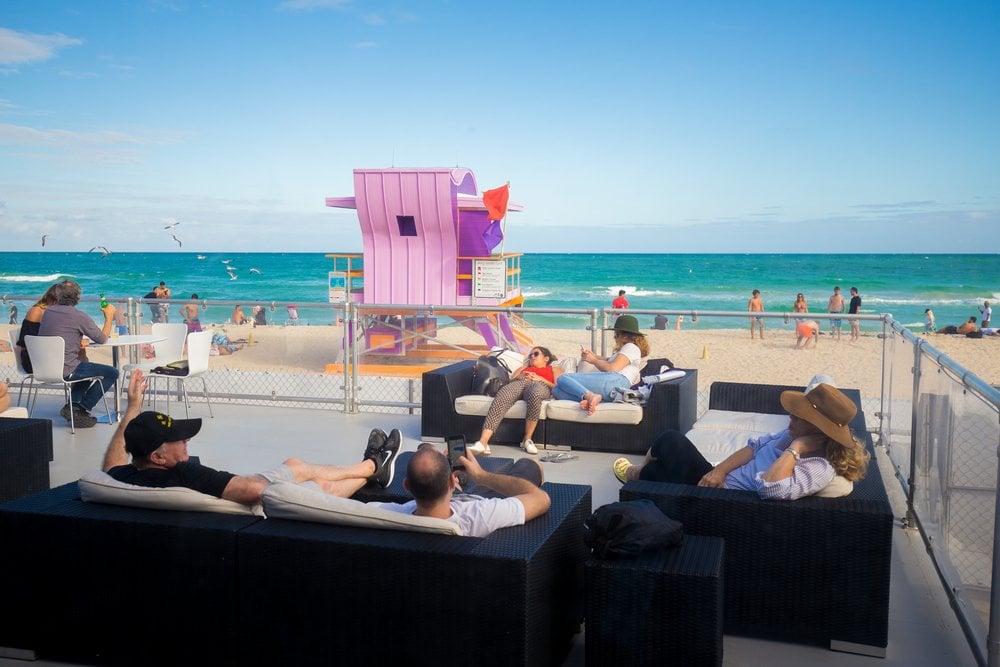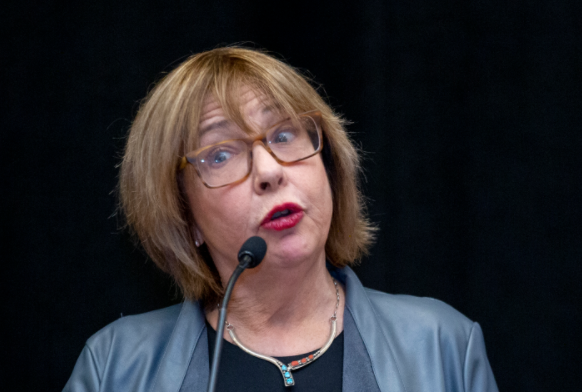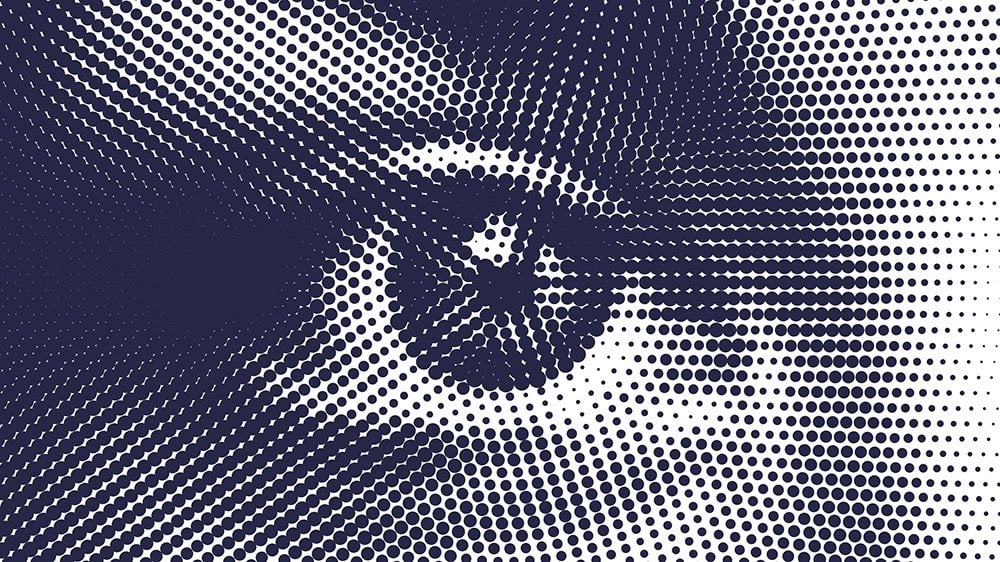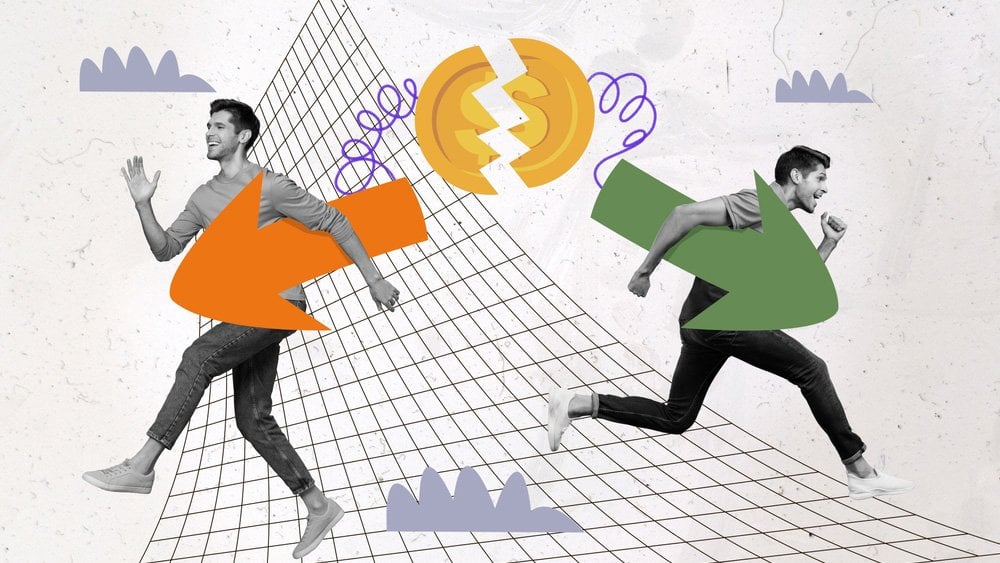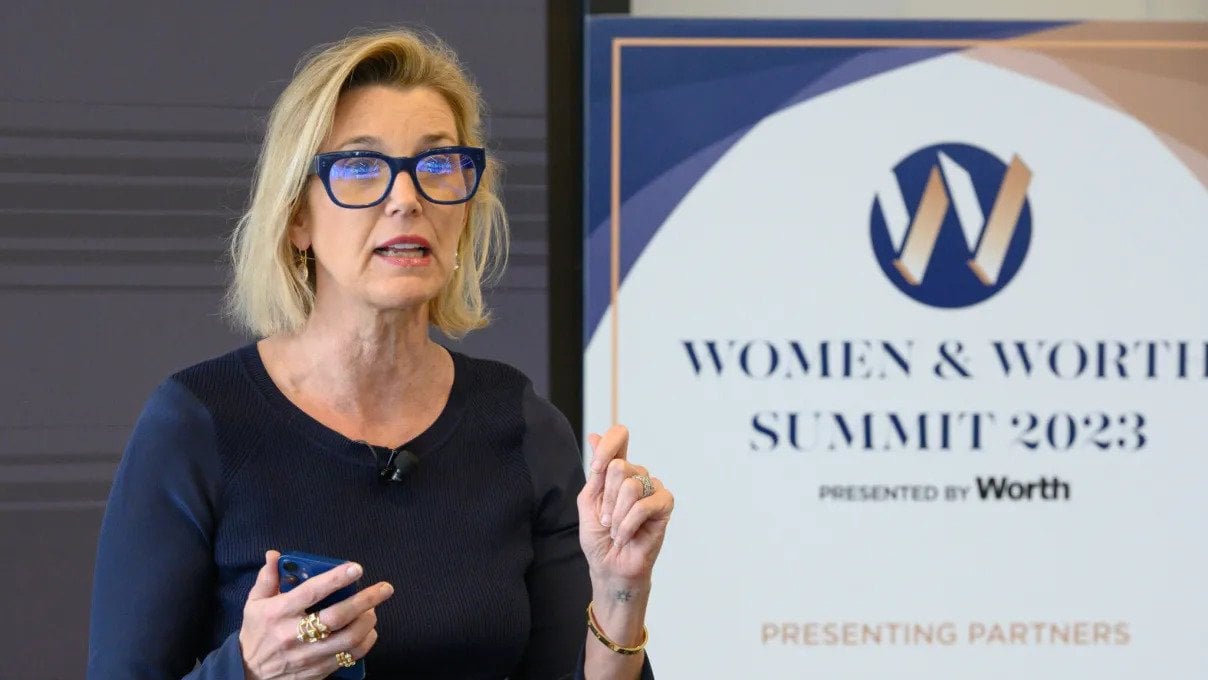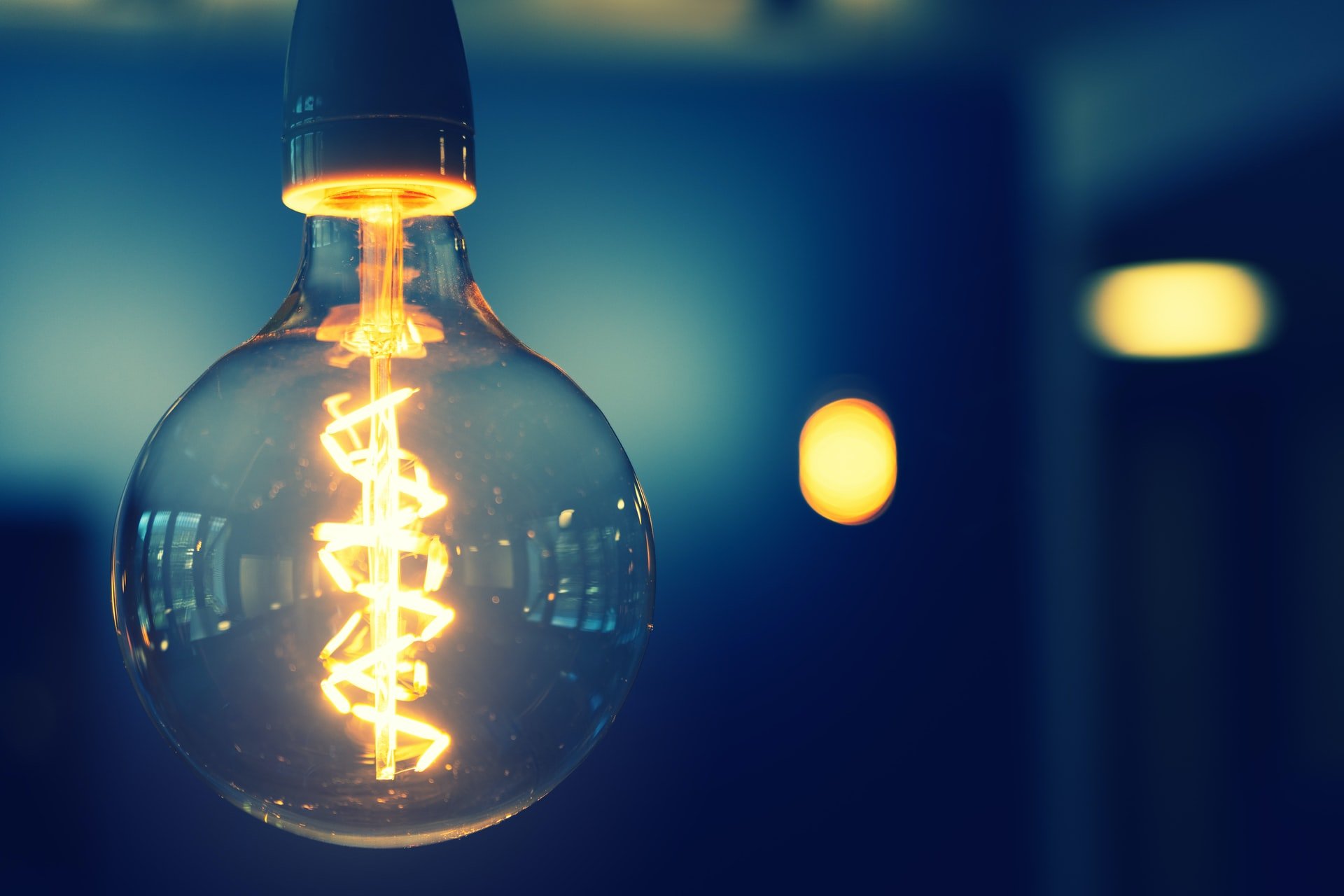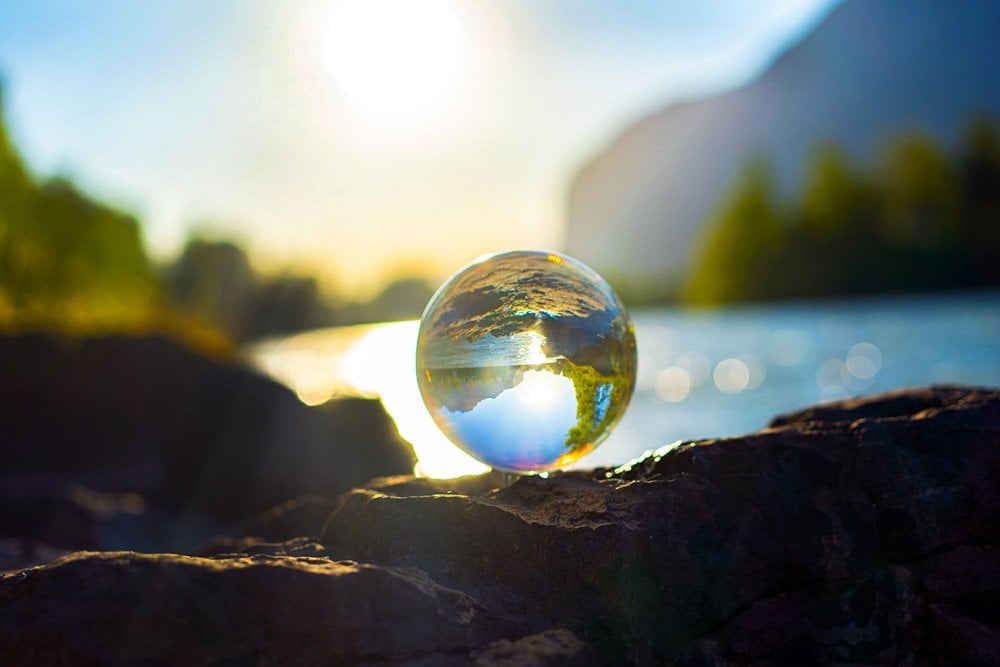If life imitates art (Oscar Wilde) then NFTs imitate both art and life. NFTs, if you haven’t heard, are digital things — art, music, video, and even, sometimes, physical things, that you can purchase, collect, own and display. Your proof of ownership is stored on a blockchain and you can trade or sell whenever you can find somebody else to buy it. But the NFT craze, which along with its crypto parent has created much new wealth, is decisively blending with the traditional worlds of wealth.
Earlier this month, at Art Basel in Miami, the crypto and art worlds converged, in a multitude of parties, events, conferences and glitz-outs. At a minimum, Miami reinforced its status as the hottest place (in all senses) for everything wealthy and glittery. Ultimately, Art Basel may have been transformed, perhaps forever, by the technorati. And the NFT contingent insisted that NFT art will be attached to the world of high art forever after, for better or worse.

Miami for those few days in early December was reminiscent of the story of the blind man and the elephant, depending on which part of the festivities you touched. Jon Wayne Gurman, the father of WooshiWorld, a new NFT property he hopes will become a physical property and series of merchandise, attended both the Art Basel show and the many surrounding NFT events. “Art Basel was very boring compared to the energy and excitement generated at the NFT events,” he said.
Jordan French, editor of Grit Daily and an events producer, took a page from the Art Basel playbook by co-locating there the Token Society, a crypto-VIP gathering. Its speakers spanned both the art world and that of NFTs. The soiree included creators, comedians, TV hosts, and as well as the usual hangers-on. French promoted it as a “classy” event, worthy of Miami’s see and be seen vibe.
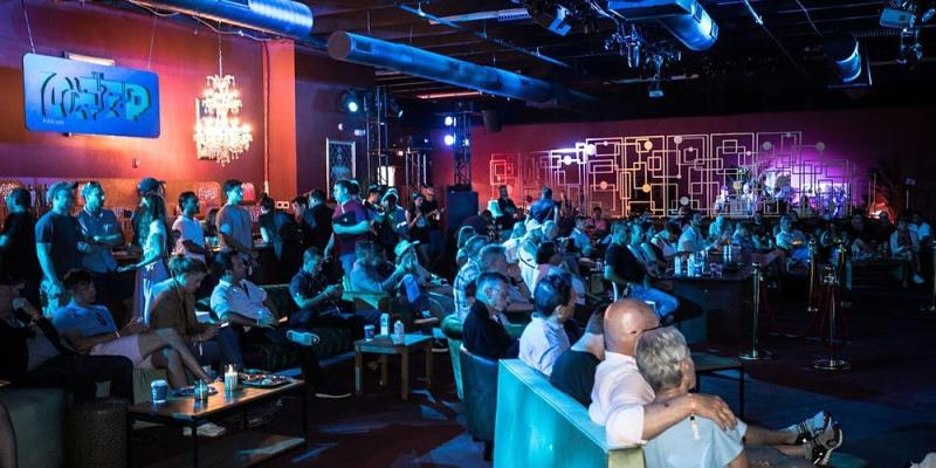
Akbar Hamid’s PR firm, 5th Column, is a rising star for helping NFT properties get launched and noticed. What jazzed him the most in Miami Beach was the feeling that he was witnessing the birth of a work in progress. “You know you were hearing brilliant ideas that have not been realized yet, “ he told me. Hamid’s clients included Sandbox, whose party-event featured Blond:ish. His other client, Wax, appeared at NFT BZEL event that Hamid helped organize. Wax’s William Quigley was a featured speaker. It aimed to cross-pollinate entertainment, investment, and collecting to create a conference covering a spectrum from “NFT for newbies” to a roadmap to the future. Aku — a helmeted digital explorer whose story is told across 10 NFT “chapters” – was unveiled by former MLB player Micah Johnson (who made $2 million during his own debut NFT sale in March). Fans and collectors of Bored Ape Yacht Club, whose owners include a roster of celebrities, celebrated their newfound status over BAYC-branded beers.

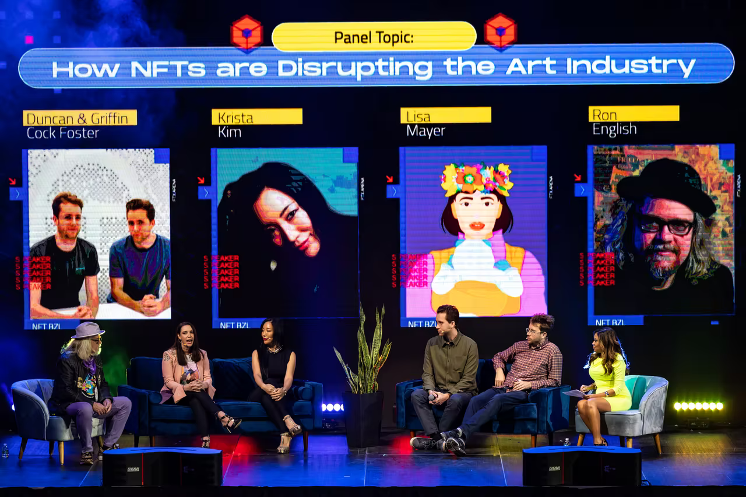
The DNA connecting NFTs and the art world is clear. You create a piece of art and instead of framing it, mint it into an NFT, which you can sell at any number of sites like Rarible and OpenSea. This past March, the gavel heard round the world was sounded by the venerable Christies auction house, when when it sold an NFT created by the relatively-unknown Mike Winkelmann, aka Beeple, for an astonishing $69.3 million. With that gavel thump, Beeple became the third most valuable living artist at auction, after Jeff Koons and David Hockney. At Art Basel, 255–year-old Christie’s partnered with 6-month-old nftnow in Miami to produce The Gateway, a music art celebration heralding the NFT world.
The Miami Art Week is summed up in a tweet from Janet Lee.
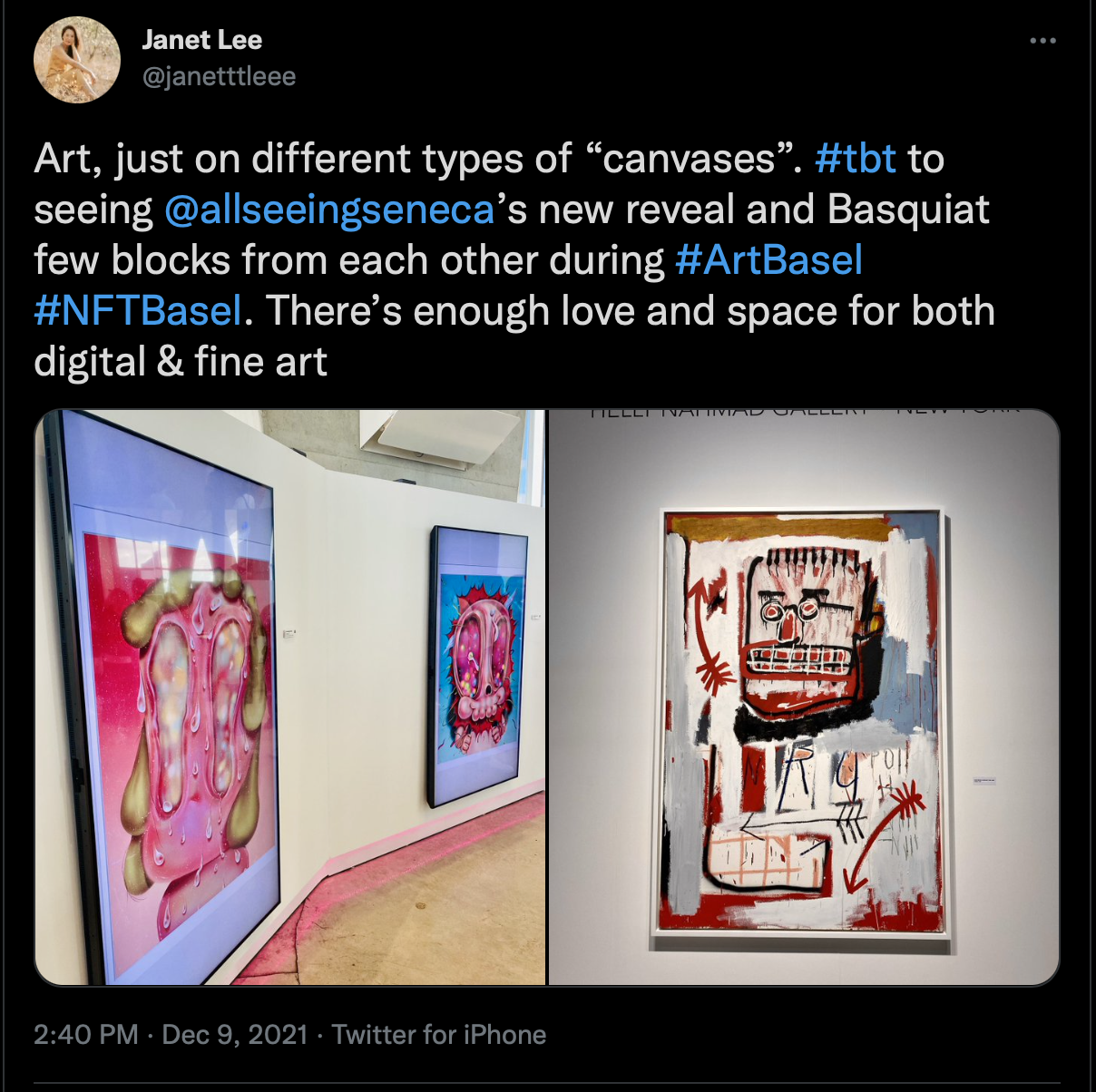
NFTs weren’t the sole province of sideshows. Humans + Machines: NFTs and the Ever-Evolving World of Art exhibited at Art Basel proper, with an interactive show built on the energy-efficient blockchain Tezos. Guests created their own NFTs by fusing their video-captured likeness with an algorithm and then selecting the visual image they found most engaging. More than 4,500 unique NFTs were thus populated.
Growing the NFT Ecosystem
Daniel Mikesell, an art collector-cum-technologist, seized the moment with his company Blackdove. It has a top-of-the-line platform aiming to create world-class display frames for NFT art. It wants to liberate NFT art from its paltry home on your mobile phone and turn it into a beautiful true collectible displayed in the same way you’d display any piece of fine art. “I’m not judgemental about the importance of the value of art, “ says Mikesell. “It’s in the eye of the beholder,” he says when comparing NFTs to physical art. (Many NFTs are not the slightest bit visually or artistically sophisticated.) But, Mikesell believes NFTs need to be showcased somewhere else than the screen of a phone to be enjoyed and properly shown to others. “When you buy a painting, you don’t carry it around with you. Why would you want artwork you collect to stay on your phone?”
Mikesell suggested that this year’s Art Basel Miami was not a takeover of traditional art fairs but rather the beginning of a true melding of the worlds of physical artworks and NFTs. Many artists, he noted, are showcasing real-life artworks side by side with NFT digital counterparts.
The Great Co-mingling
For the FOMO crowd, it was hard to know where to be. The Information reported on the scene in a piece called The NFTS that Ate Miami: “The Winklevoss twins sauntered through a private waterfront mansion dressed identically. DJ Khaled bellowed “Gem-in-i” and “Cryp-to” from the stage. NFT pioneer Beeple, pop star Macy Gray, and Larsa Pippen, ex-wife of Scottie and ex-friend of Kim Kardashian, all made appearances.” Artist Jason Keath, founder of NFT Fresh, summarized for The Information:“A lot of people walking around with millions of dollars of JPEGs in their pockets.”
Even Time Magazine and Conde Nast went ga-ga over the high celeb quotient and meteoric rise of NFTs. Interviewing Diplo, the Grammy Award winning DJ, Conde Nast explained what inspired him to buy a Bored Ape NFT: “I like the apes the most because they remind me of the stuff I collected as a kid, like Ninja Turtles. And it feels cool to have one — I can show it to Post Malone at a party, and he’ll be like, “Oh cool, you got that one?” It’s kind of silly, but it’s a flex — like buying a really nice outfit.”
Andy Fischer Wright, an academic, nails some of the oddities of the moment in his treatise “Art Imitates Life, NFT Verifies Art.”
Alas, The Rich are Not Immune
Seeing, being seen, and being seen owning the trendiest most whimsical and perhaps evanescent collectible may have come at a cost to some who were there. The rich and connected are no more immune to COVID-19 than to a money-drenched fad. One investor in the know told me that many of the crypto crowd were using fake proof of vaccinations cobbled together from QR codes. Another told me that eight of his colleagues left Miami with the Omicron variant.
Favorite tweet:
With all the art basel related cases, covid-19 is going to be spreading via the blockchain now. #NFTs #Miami #NFTGoneviral
— Francois le Roux (@FBleRoux) December 15, 2021

